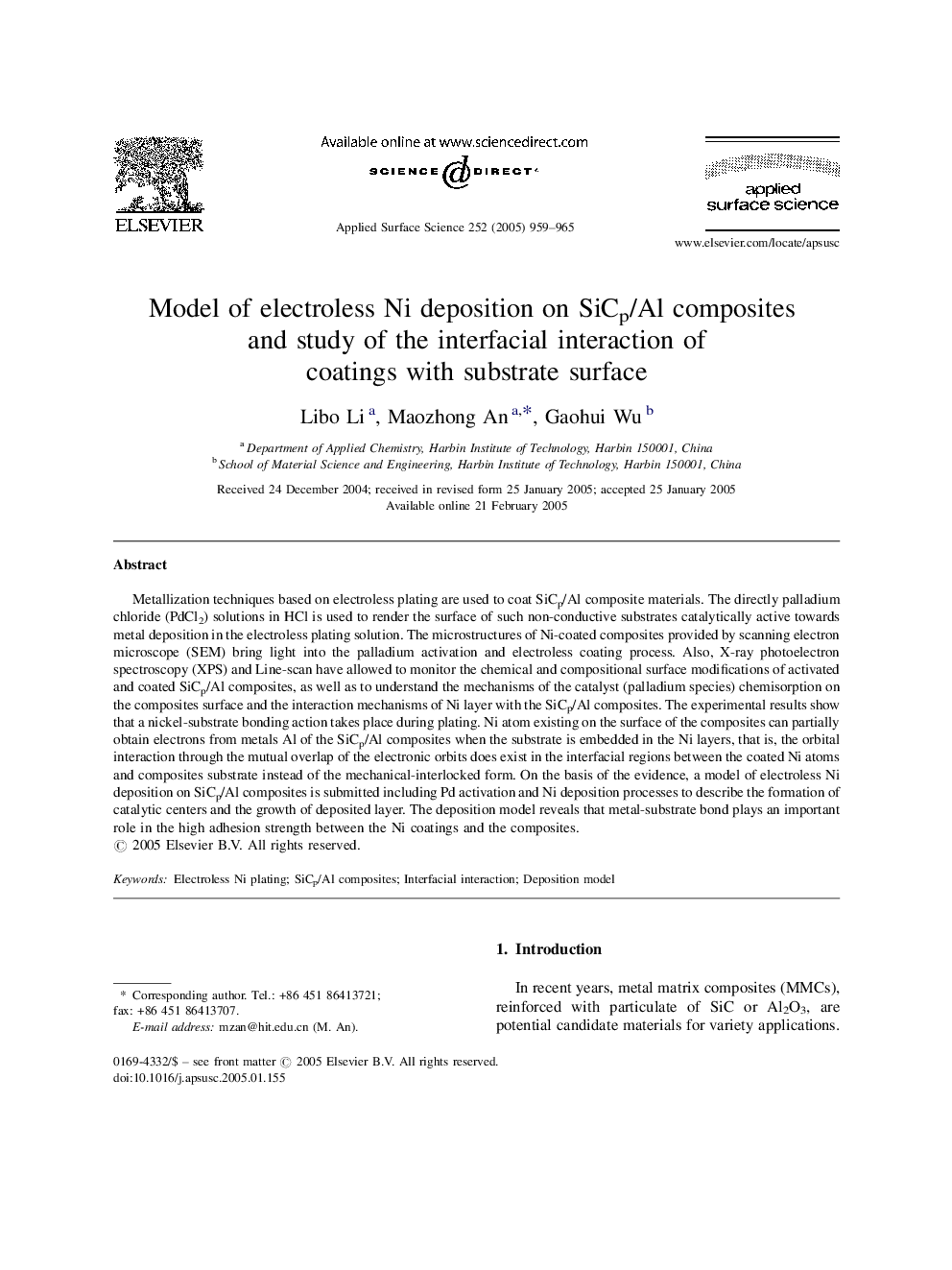| Article ID | Journal | Published Year | Pages | File Type |
|---|---|---|---|---|
| 9566698 | Applied Surface Science | 2005 | 7 Pages |
Abstract
Metallization techniques based on electroless plating are used to coat SiCp/Al composite materials. The directly palladium chloride (PdCl2) solutions in HCl is used to render the surface of such non-conductive substrates catalytically active towards metal deposition in the electroless plating solution. The microstructures of Ni-coated composites provided by scanning electron microscope (SEM) bring light into the palladium activation and electroless coating process. Also, X-ray photoelectron spectroscopy (XPS) and Line-scan have allowed to monitor the chemical and compositional surface modifications of activated and coated SiCp/Al composites, as well as to understand the mechanisms of the catalyst (palladium species) chemisorption on the composites surface and the interaction mechanisms of Ni layer with the SiCp/Al composites. The experimental results show that a nickel-substrate bonding action takes place during plating. Ni atom existing on the surface of the composites can partially obtain electrons from metals Al of the SiCp/Al composites when the substrate is embedded in the Ni layers, that is, the orbital interaction through the mutual overlap of the electronic orbits does exist in the interfacial regions between the coated Ni atoms and composites substrate instead of the mechanical-interlocked form. On the basis of the evidence, a model of electroless Ni deposition on SiCp/Al composites is submitted including Pd activation and Ni deposition processes to describe the formation of catalytic centers and the growth of deposited layer. The deposition model reveals that metal-substrate bond plays an important role in the high adhesion strength between the Ni coatings and the composites.
Related Topics
Physical Sciences and Engineering
Chemistry
Physical and Theoretical Chemistry
Authors
Libo Li, Maozhong An, Gaohui Wu,
